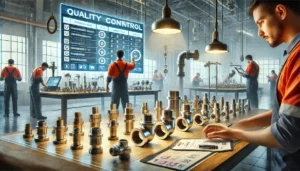Hydraulic systems are vital in nearly all industries by providing the necessary power to equipment and machinery so that they can carry out essential duties. These systems should be appropriately maintained if their longevity, safety, and efficiency are to be guaranteed. Unsurprisingly, a well-structured maintenance practice can help avoid unexpected failures, reduce downtime, and increase the entire hydraulic system’s useful life.
1. Regular Inspections
Operators should operate daily checks to ascertain the general condition of hydraulic components including hoses, fittings, connections, and a variety of other relevant gears. These efforts help identify or detect potential issues that threaten to escalate into larger problems. Such routine inspections are critical for ensuring systematic procedures are followed for early problem detection.
2. Monitoring Fluid Levels and Quality
Fluid contamination is very specific in nature, and thus additional monitoring of things like fluid removal or even discoloration can help determine whether maintenance is necessary. Tarnishing or spindle should the fluid be altered are clear indications that fluid replacement is due. Operators should also routinely check if the fluid levels have dropped. If there’s a need to remedy these drops in fluids, ensure the same brand and level of viscosity is used for the remedy.
3. Temperature Control
Hydraulic systems require proper operating temperature to function effectively and efficiently over a period of time. High temperature can lead to fluid degradation that produces varnish and sludge, while low temperature can lead to condensation and pump cavitation. Try to keep the system within the operating temperature range as provided by the manufacturer. Overheating can be avoided through using oil coolers as well as regularly monitoring system temperatures to ensure all components are working correctly.
4. Ensuring System Cleanliness
Inappropriate system maintenance remains one of the main causes of failure in hydraulic systems. The system can be kept clean will the following measures:
- Reservoir Maintenance: Rinse the reservoir at regular intervals to get rid of the accumulated dust and dirt to evade contaminants damaging the system’s components.
- Filter Management: Follow the supplier’s component specification directions when replacing filters to ensure proper fluid contaminations removal. Also, portable filters should be used while adding fluid to the system.
- Seal Integrity: Seals & O-rings should be checked for signs of damage or wear. Damaged seals increase the potential for leakage as well as contaminants. To ensure system integrity, seals that are damaged must be replaced, so that the system ceases to be compromised.
5. Leak Detection and Repair
Apart from fluid wastage, leaks can cause safety and environmental problems, too. Check the system regularly, and make sure to look at hoses, fittings, and connections since those are the most susceptible areas. Fix all leaks as soon as you encounter them to limit the damage and boost efficiency.
6. Lubrication of Moving Parts
Moving parts such as hydraulic sistemas are prone to excessive friction and wear. It is necessary to follow best practices when lubricating parts such as cylinders, pistons, and bearings. Make sure the lubricant used is suited for the hydraulic fluid and components of the system.
7. Monitoring Pressure and Flow Rates
Pressure and flow rates should be checked regularly against the system parameters. Any changes can point out problems such as worn-out pumps and malfunctioning valves. Immediate corrective measures or repairs can fix a more serious issue for the system.
8. Training and Documentation
Operators and maintenance personnel require adequate training. Knowing how to operate the system properly allows for maintenance to be done in a safe way. Moreover, recording inspections, maintenance, and repairs done on the system provide necessary information for further diagnosis of the system’s state.
9. Implementing Predictive Maintenance
For handheld devices such as smartphones and tablets, the tracking of performance and the tendency to fail to work as intended has been monitored and recorded using both vibration analysis and thermography. Using these techniques allows maintenance of the device’s functionality in a simple and straightforward manner.
10. Adhering to Manufacturer Guidelines
Always prioritize the maintenance schedules provided by the manufacturer. These schedules, formulated post extensive testing, truly ensure the fullest and most effective functioning of the system.
Conclusion
Comprehensive predictive maintenance must be done for checking on the efficiency and longevity of the hydraulic systems. Taking precautions through regular inspection, monitoring temperature and fluid quality, and cleaning cuts and the hydraulic system itself are the fundamental practices. By predicting when maintenance is required, an operator can allow for system reliability, decrease the amount of down time, and prolong the life of pieces of components within the hydraulic system.










